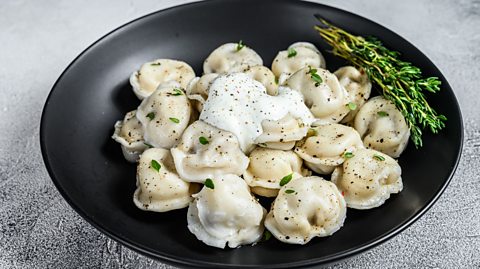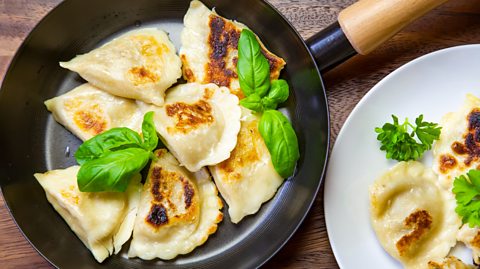Some foods not only taste delicious, but have incredible stories to tell. One is the dumpling, a bite-sized treat that comes in many shapes and sizes all over the world.
When a food is a cultural staple, recipes will have been passed down for generations, constantly being tweaked and perfected, until they finally land on your plates. As such, they have rich and vibrant histories that you might not be aware of when you chow down.
Dumplings are an important part of many cultures' cuisines across the globe, so here are three and their stories.
Pelmeni
Pelmeni hail from Russia, and are the type of food that every family has their own recipe for.
It’s thought the name comes from the Komi, a people indigenous to northern Russia, near the Ural mountains and Siberia. In their language, 'pelnyan' means 'dough-ear', which could be a reference to the food’s half-circular shape. When the word crossed into Russian, it changed a bit (as most words crossing language barriers do) to 'pelmen', the plural for which is 'pelmeni.'

The concept of pelmeni is probably not native to that area, however. Early Mongolian people may have borrowed it from the Chinese and carried it west, even as far as Eastern Europe.
They were popular with early Siberian hunters though, as they would freeze well and are easily cooked (traditionally they’re boiled), so in the winter they would be taken on hunts as a quick and easily transportable meal.
Traditionally, the filling consists of ground meats such as beef, pork, or lamb, often seasoned with onion, and served with sour cream.
Pierogi
A close cousin of pelmeni, pierogi are believed to have been prepared in Poland since the 13th Century. However, the first written pierogi recipe can’t be found until much later; from the Compendium Ferculorum, a book published in 1682 and written by soldier and chef Stanisław Czerniecki. His pierogi were not filled with potatoes (which were not common in 17th century Poland) as they often are today, but with greens, chopped kidneys, veal fat and seasoned with nutmeg. In the 18th Century, fresh white cheese was the filling of choice.

They are so important in Poland that there is even a patron saint of pierogi. Saint Hyacinth (Jacek Odrowąż) is, according to legend, thought to have brought pierogi to Poland from what is now Ukraine. It’s said he fed dumplings to the poor in Kraków following the Tatar invasion, and there is an old Polish saying "Święty Jacku z pierogami!” (“Saint Hyacinth and his pierogi!”) which is a hopeful rallying cry in the midst of hard times.
Another story goes that on 13 July 1238, in the town of Kościelec, a hailstorm broke out during his visit destroying all of the crops. Hyacinth told the people to pray and the following day the crops were miraculously restored. The people thanked Hyacinth by making him pierogi from the crops.
Pierogis can be sweet or savoury. Cottage cheese and potatoes are common fillings, and sauerkraut pierogi are often eaten at Christmas.

Gyoza
Gyoza are dumplings made of a wheat dough wrapper that surrounds a filling of seasoned vegetables, meat or fish. They are a popular dish in Japan, but they travelled there from China where they’re known as jiaozi. They are eaten slightly differently depending on the country - they’re traditionally boiled in China, whereas in Japan they're fried then steamed in the same pot.
Lots of Japanese soldiers became familiar with jiaozi during World War II when they were stationed in China. When the soldiers returned home to Japan they wanted to recreate jiaozi and so brought recipes back with them, popularising them in the country. However, they were not completely unheard of in Japan before this - the first reference to gyoza in Japan is from the late 17th century from Nagasaki, where there was a Chinese settlement.
The city of Utsunomiya in Japan is particularly famous for its consumption of the savoury dumplings. The city consumes more gyoza per capita than anywhere else in the country, according to annual surveys, and has an annual gyoza festival.

Myth-busting food origin stories
Chocolate chip cookies, crisps and Caesar salad all have legendary histories, but are they true?

The takeaway treats that have become national treasures
How poutine, kebab pizza and more found their way into a country's heart

Quiz: What weird stuff is in your food?
You won't believe some of the things we eat!
